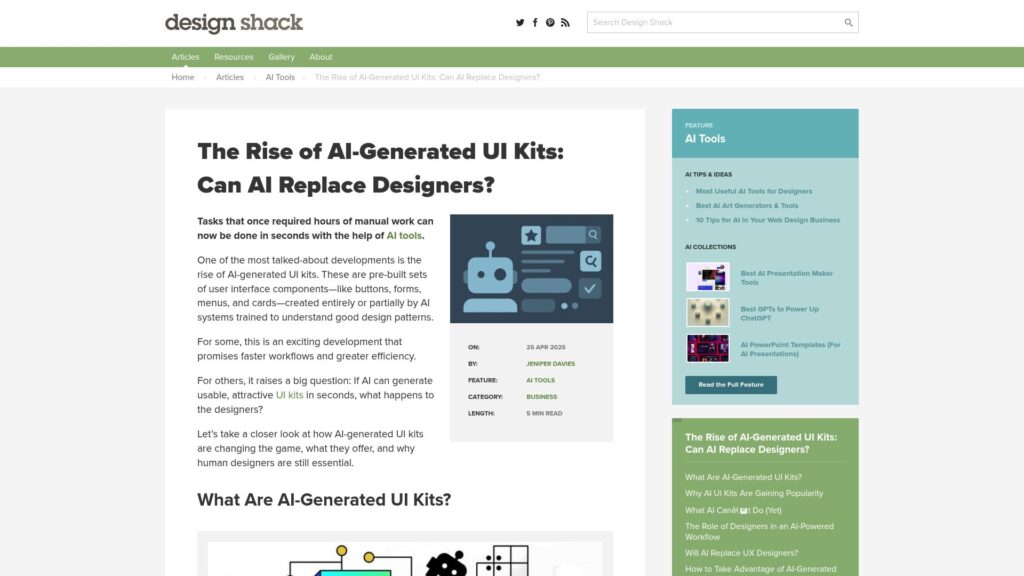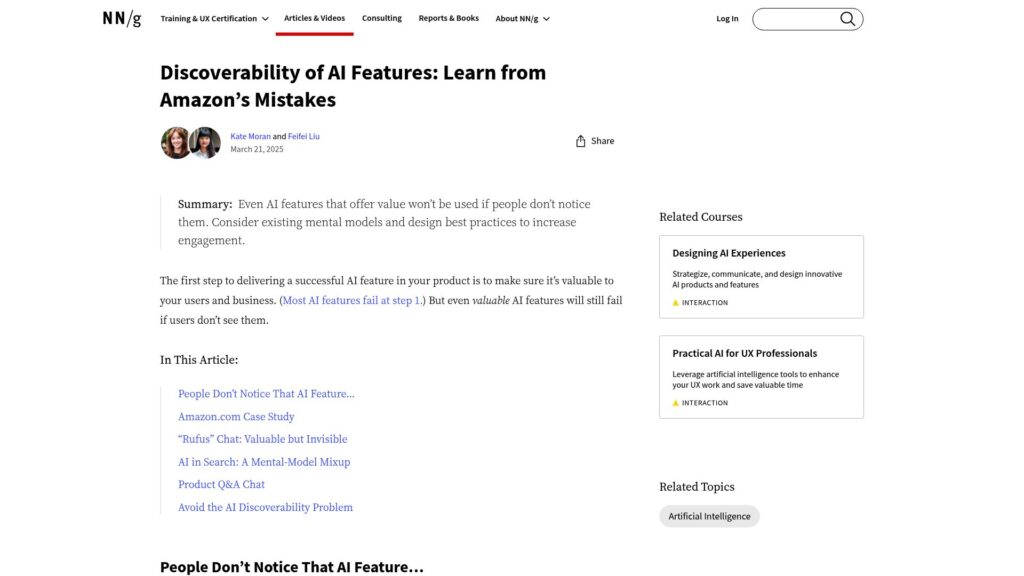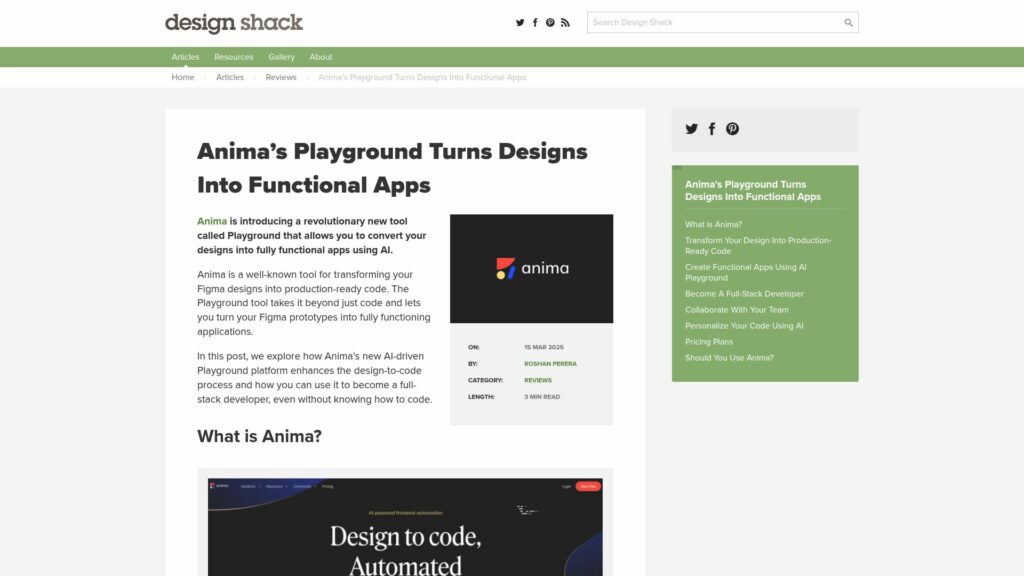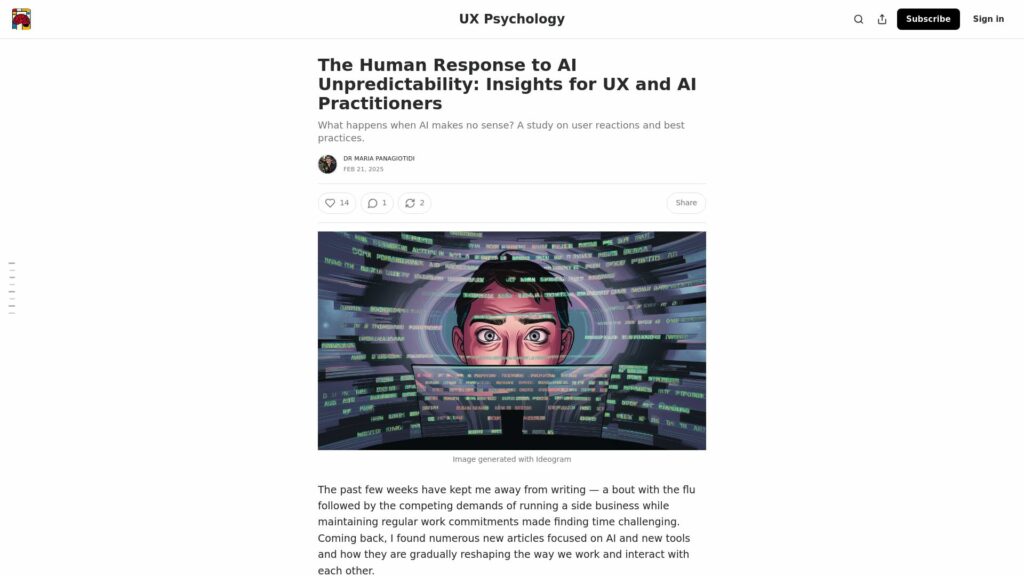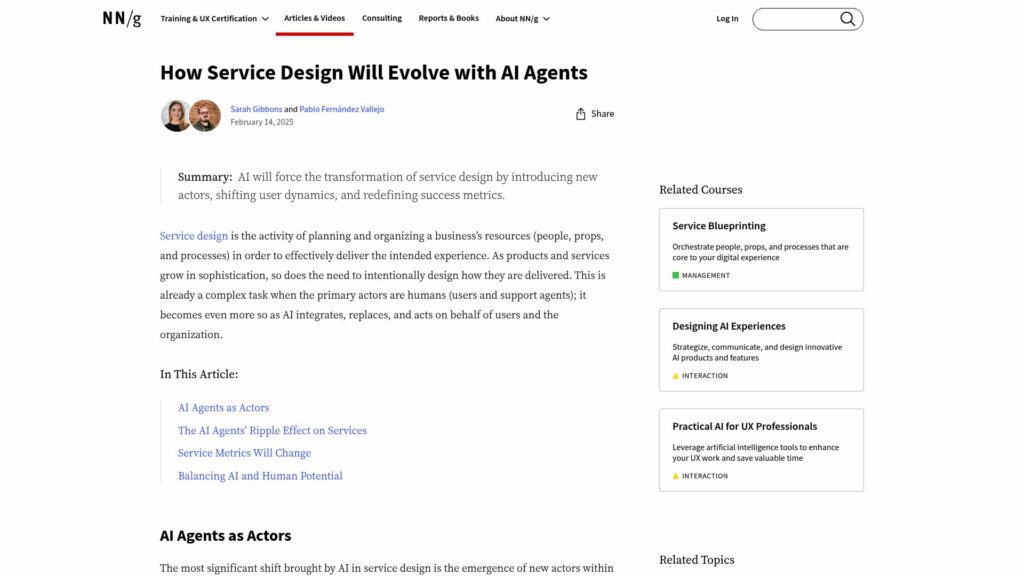The Rise of AI-Generated UI Kits: Can AI Replace Designers?
AI-generated UI kits offer rapid design solutions, transforming complex tasks into quick outputs. While they improve efficiency and accessibility for non-designers, AI lacks the emotional and contextual understanding that human designers provide. Designers can utilize AI as an assistant, focusing on creative strategy and problem-solving instead of routine tasks. Ultimately, AI isn't poised to replace UX designers but to complement their work, enhancing workflows and collaboration.
https://designshack.net/articles/business-articles/ai-generated-ui-kits/
